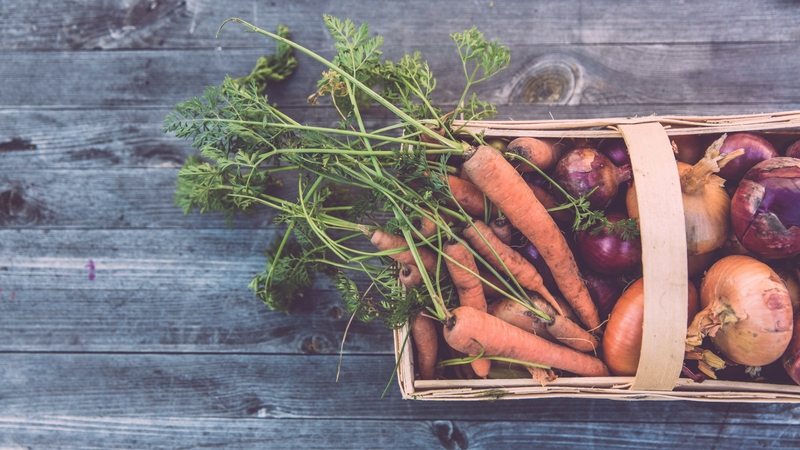Harvesting and Preserving
Episode #9 of the course Small-scale gardening by Alice Morgan
Good morning! Now that we’re covered how to build and care for your garden, let’s talk about the most rewarding parts of gardening: harvesting your crops and preserving them for future use! There is nothing quite as wonderful as walking to the garden from the kitchen and bringing back fresh vegetables and herbs for dinner.
When to Harvest
You always want to harvest your crops at the peak of ripeness, when their color, texture, and flavor are best. The first time you try growing a new variety, consult its seed package for a general harvest date. When harvesting, remember that many plants will continue to produce after the first harvest is removed, but only if they have all their leaves, roots, and stems. Fresh food should be eaten or preserved as soon as possible.
Food Preservation
Human beings have been preserving food for years. Our ancestors needed food that would keep long term and wouldn’t spoil. Even with all of the abundant resources in modern society, many gardeners produce more food than they can eat before it goes bad. Fortunately, there are so many ways to preserve food, you’re sure to find one to your tastes. Let’s talk about two beginner-friendly methods for you to try: freezing and canning.
Freezing is one of easiest methods of food storage. All you need is a freezer and a box of freezer bags and you’ll be ready to go. Frozen food will keep for several years, though their nutritional value will start to degrade after a year or so.
Many fruits and vegetables will be ready to go in the freezer with minimal prep. Be sure to choose only the highest quality produce. Rinse and dry them, and chop them up as needed. Place them in freezer ziptop bags, and squeeze out all the air in the bag. Some people like using a drinking straw to suck any remaining air out of the bags. Foods that freeze well without blanching are berries and fruits, onions, peppers, corn still in their husks, sugar peas, summer squash, young broccoli spears, herbs, celery, cabbage, and other greens.
Other foods will need to be blanched before they can be frozen. These vegetables have enzymes on their surfaces that will cause them to spoil even after freezing. Blanching stops this process. Drop your vegetables in boiling water for a specific amount of time, and then place them in ice water for the same amount of time. Freeze just as described above. Foods that need blanching include: beans, broccoli, brussel sprouts, carrots, cauliflower, and cut corn.
Canning is a bit more complicated than freezing, but it can be even more rewarding. Canning is the process of heating food in glass jars to create a vacuum in the jar and stop food from spoiling. There are two methods of canning: water bath canning and pressure canning.
The water bath method works best for food with high acidity. You’ll need a large, deep pot and a canning rack, canning jars, and ladle or funnel. Make sure to use an already-tested canning recipe, and follow it closely. For this method, you’ll process your food in a glass jars under hot water until the jars seal. If the lid doesn’t seal, store it in the refrigerator and use its contents as soon as possible.
Pressure canning is very similar to water bath canning. This method is for low-acidity foods that need a bit more help to prevent food from spoiling. You’ll need to purchase a pressure canner, but otherwise, the process is similar to the above. The only difference is that after adding the filled jars, you’ll need to lock on the pressure canner’s lid and carefully monitor the gauge to keep it at the recommended pounds of pressure for your recipe.
Don’t feel limited to freezing and canning. There are many ways to save your produce, and I encourage you to research and explore all the rich flavors preserving can bring to your table. Tomorrow, we’ll wrap with how you can continue to grow in knowledge and skill beyond this course.
Recommended book
Share with friends

